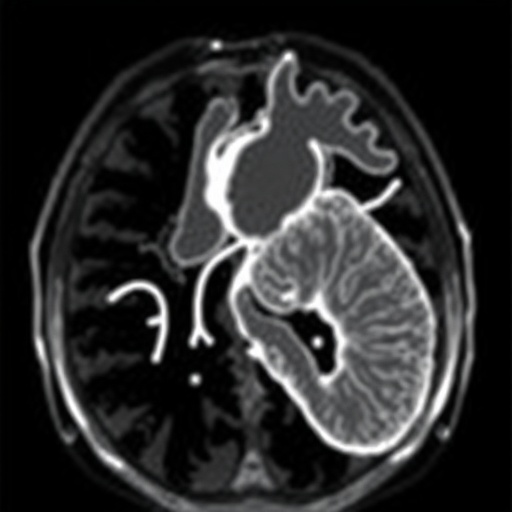The global landscape of academic research has witnessed a significant shift in recent years, particularly in the domain of retinoblastoma, a rare but aggressive form of eye cancer typically found in children. Retinoblastoma is characterized by mutations within the retinoblastoma gene (RB1), presenting a compelling case for the search and identification of effective biomarkers for early diagnosis and treatment. Recent work highlighted by Peng, Hu, and Chen sheds light on the intricate landscape of retinoblastoma research, showcasing a multidisciplinary bibliometric analysis covering a span from 2005 to 2025.
This extensive analysis indicates that the field of retinoblastoma biomarker research is rapidly evolving, with an increase in publications, collaborations, and citations. The relevance of identifying robust biomarkers cannot be overstated, as they play a critical role in personalized medicine, enabling tailored treatment options for patients. Early detection of retinoblastoma significantly improves survival rates, underscoring the urgency for advancements in this area.
The bibliometric analysis underscores that the interconnection among various research disciplines—from molecular biology to ocular oncology—allows for a richer understanding of retinoblastoma pathogenesis and potential therapeutic strategies. This multifaceted approach has opened new horizons for exploring the molecular intricacies of this malignancy, prompting researchers to employ cutting-edge technologies such as next-generation sequencing to uncover the genetic underpinnings.
In light of these advancements, one cannot overlook the increasing international collaboration among researchers, which is pivotal in addressing the complexities of retinoblastoma. The findings from this comprehensive analysis show that not only are more individuals publishing their research but also that the nature of collaboration has evolved, with researchers engaging across borders and institutions. This kind of synergy is imperative in generating innovative ideas, sharing best practices, and overall enriching the scientific conversation surrounding retinoblastoma research.
Additionally, the rise in interest in biomarkers goes hand in hand with technological advancements in the field. Innovations in imaging techniques and genetic profiling have allowed for more nuanced interpretations of tumor characteristics, which in turn makes it feasible to discover and validate novel biomarkers. This is particularly crucial in retinoblastoma, where the tumor’s heterogeneity can complicate diagnosis and treatment planning.
Interestingly, the bibliometric analysis also highlights trends in funding sources for retinoblastoma research. An evident shift has been observed in the allocation of resources, with increasing support from both governmental and private sectors aimed at funding research initiatives that target pediatric cancers. This financial backing is crucial for accelerating the pace of discovery and ensuring that promising biomarkers can be transitioned into clinical application.
What stands out in this analysis is not solely the statistical data but also the narrative it forms around the research community’s collective journey toward understanding retinoblastoma. The culture of collaboration and the urgency of innovation are palpably present, reflecting a community that is aware of the stakes involved in the fight against this life-threatening disease. The researchers involved in this study have articulated the significance of their contributions to the broader cancer research field, aiming to bridge the gap between basic science and clinical practice.
As research progresses toward the 2025 horizon, the expectations surrounding retinoblastoma biomarker studies also continue to evolve. The momentum generated by ongoing studies may lead to breakthroughs in treatment protocols, shielding children from debilitating treatments that often accompany traditional cancer therapies. It is a multidisciplinary endeavor that promises not only to enhance patient outcomes but also to pave the way for future generations of cancer researchers and clinicians.
In conclusion, the bibliometric analysis conducted by Peng, Hu, and Chen serves as an important reminder of where the field has been and where it is headed. It emphasizes the need for continued investment in research, for fostering global collaborations, and for prioritizing the development of biomarkers that can deeply impact the lives of those affected by retinoblastoma. As we stand at the intersection of technology, biology, and medicine, the potential for unlocking new treatments is limited only by our imagination and commitment.
Moreover, the ongoing analysis and subsequent discussions prompted by this research will likely lay the groundwork for future studies aimed at extending the insights gained from retinoblastoma biomarkers to other cancers. The burgeoning exploration of molecular diagnostics and personalized treatment signifies an exciting era not just for retinoblastoma, but for the entire field of oncology. Researchers and stakeholders must remain united in their efforts to harness these advancements effectively, as the ultimate goal remains not only to understand the disease but to eradicate it once and for all.
As 2025 approaches, there is palpable excitement surrounding the contributions from emerging researchers, seasoned scientists, and clinicians who continue to push the boundaries of what is possible in cancer research. With the commitment of a global research community and continued advancements in technology and funding, the future holds promise for a paradigm shift in the management and treatment of retinoblastoma, resonating hope for many families facing this challenging diagnosis.
Subject of Research: Retinoblastoma Biomarkers
Article Title: Global research landscape of retinoblastoma biomarkers: a multidisciplinary bibliometric analysis based on multiple databases (2005–2025)
Article References:
Peng, Z., Hu, Q. & Chen, X. Global research landscape of retinoblastoma biomarkers: a multidisciplinary bibliometric analysis based on multiple databases (2005–2025).
J Cancer Res Clin Oncol 151, 231 (2025). https://doi.org/10.1007/s00432-025-06279-7
Image Credits: AI Generated
DOI:
Keywords: Retinoblastoma, biomarkers, bibliometric analysis, pediatric oncology, molecular diagnostics, precision medicine.
Tags: advancements in childhood cancer treatmentbibliometric analysis of cancer researchearly diagnosis of retinoblastomaenhancing survival rates in retinoblastomamolecular biology of eye cancermultidisciplinary approaches in retinoblastomanext-generation sequencing in cancerocular oncology research trendspersonalized medicine in oncologyRB1 gene mutationsretinoblastoma biomarkers researchtherapeutic strategies for retinoblastoma





